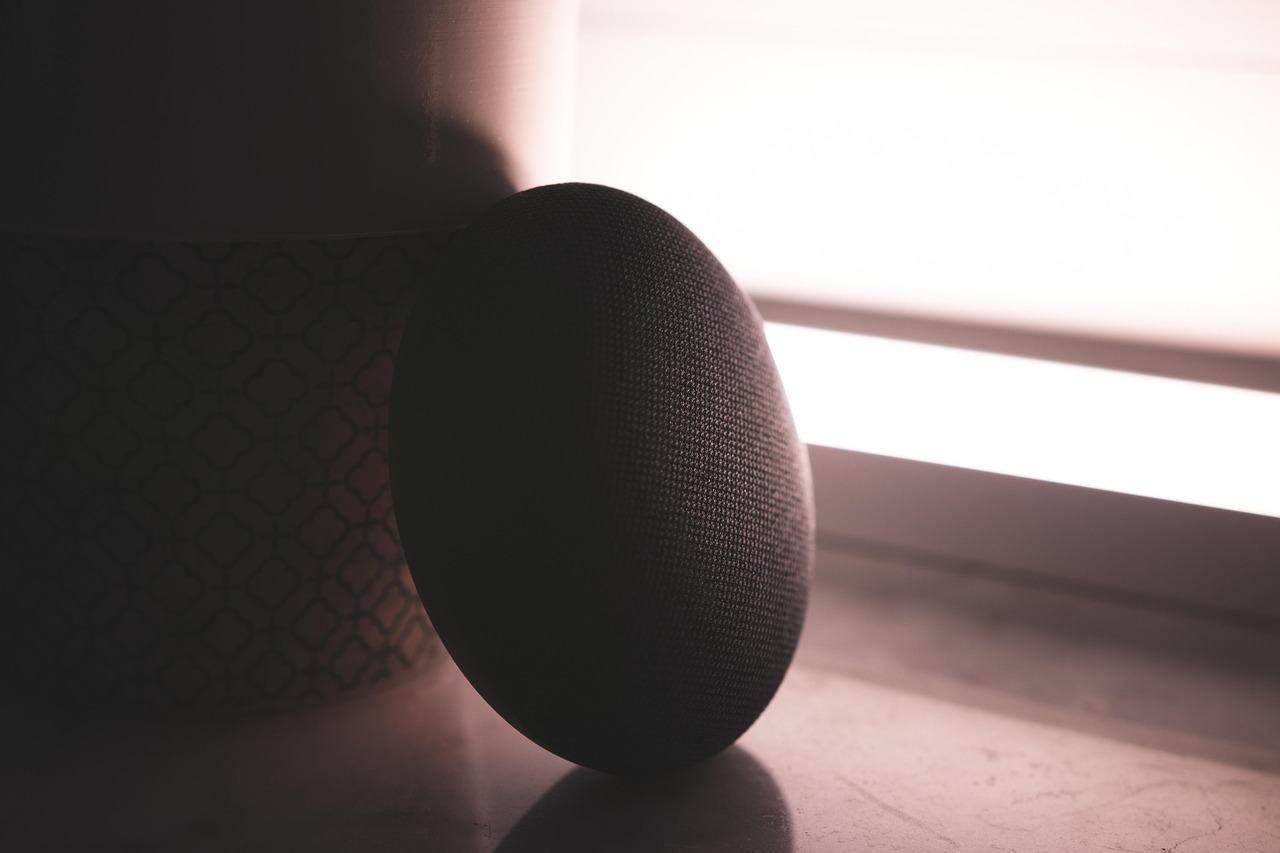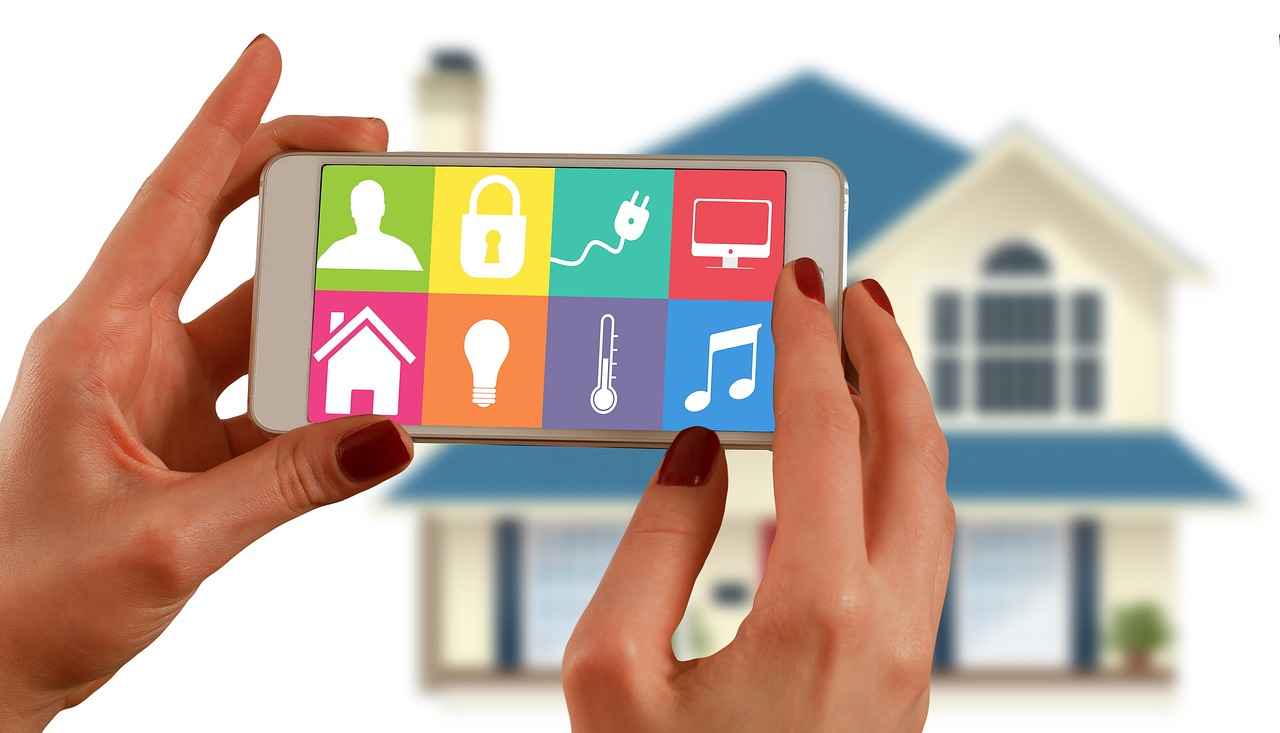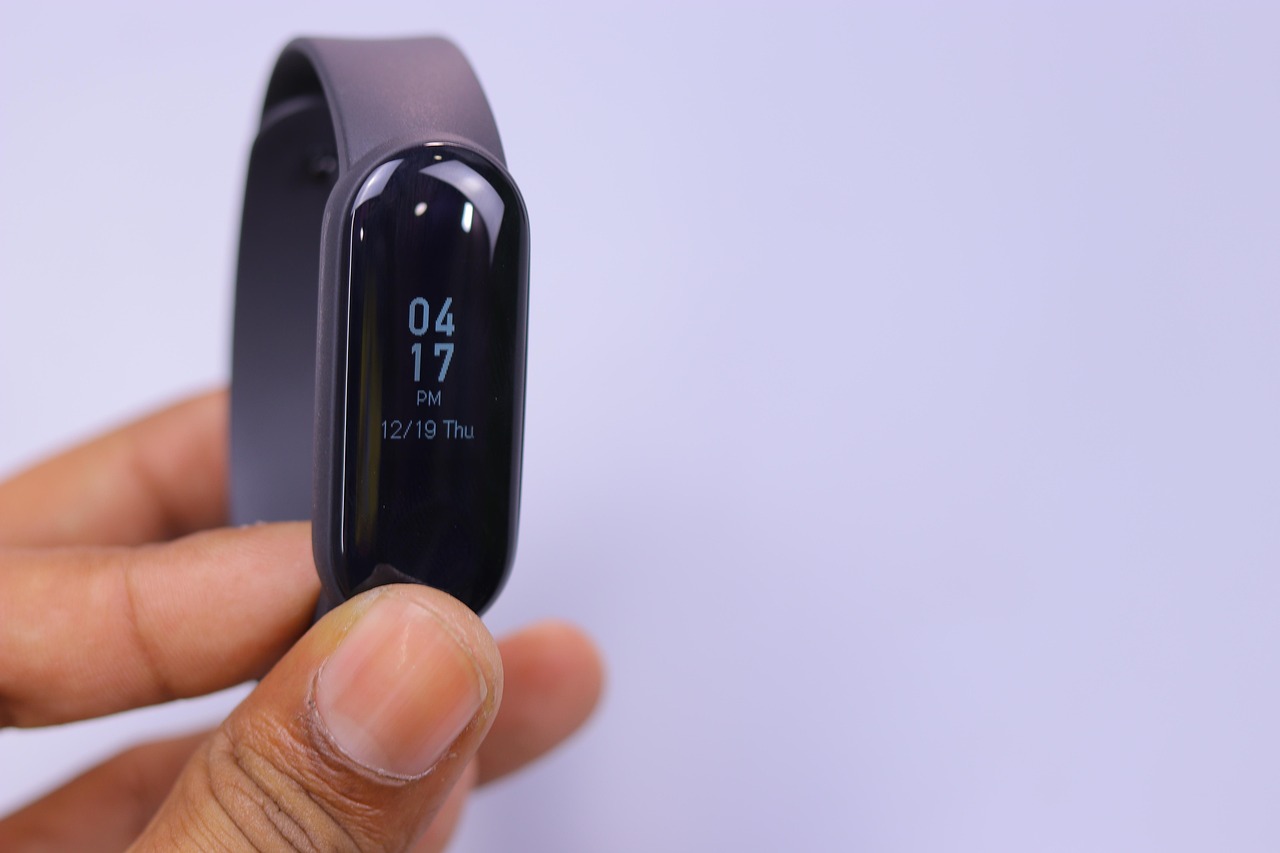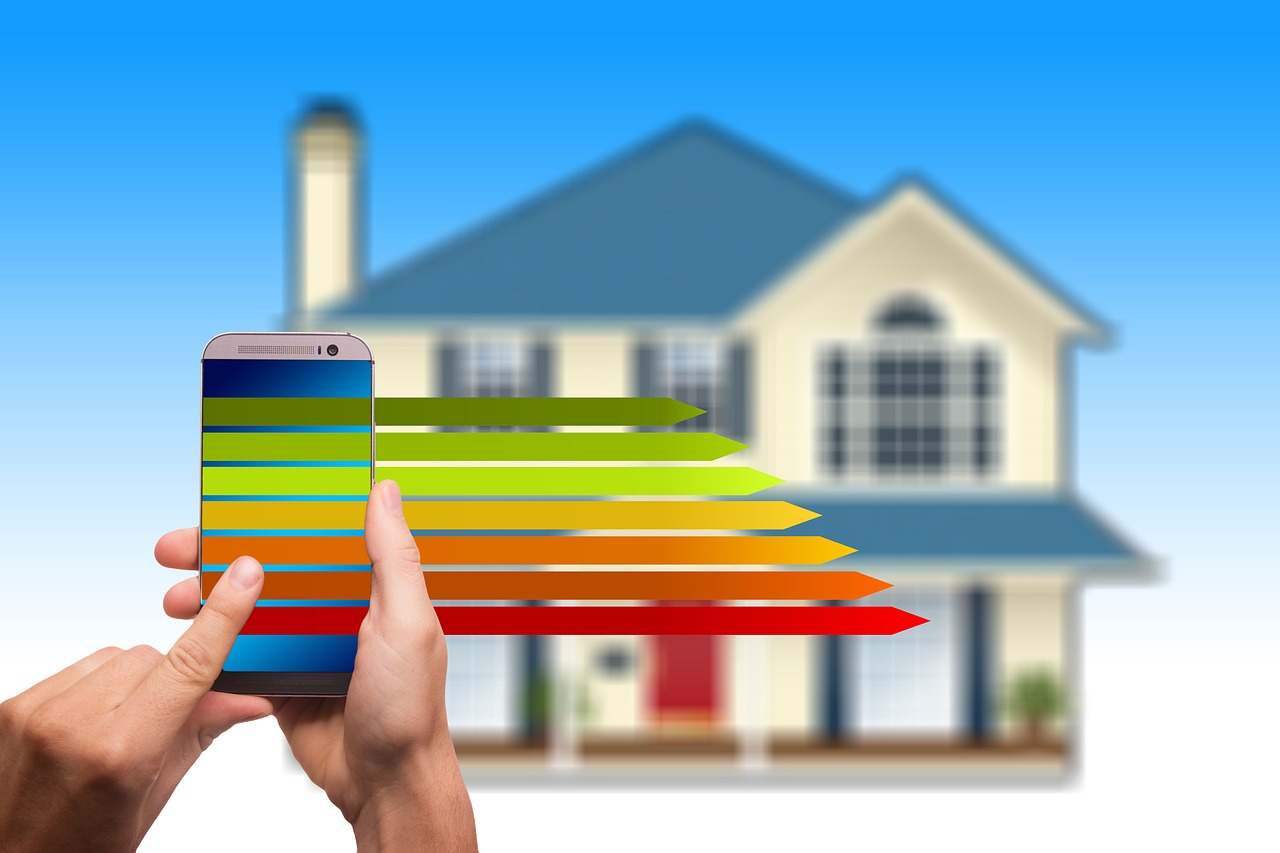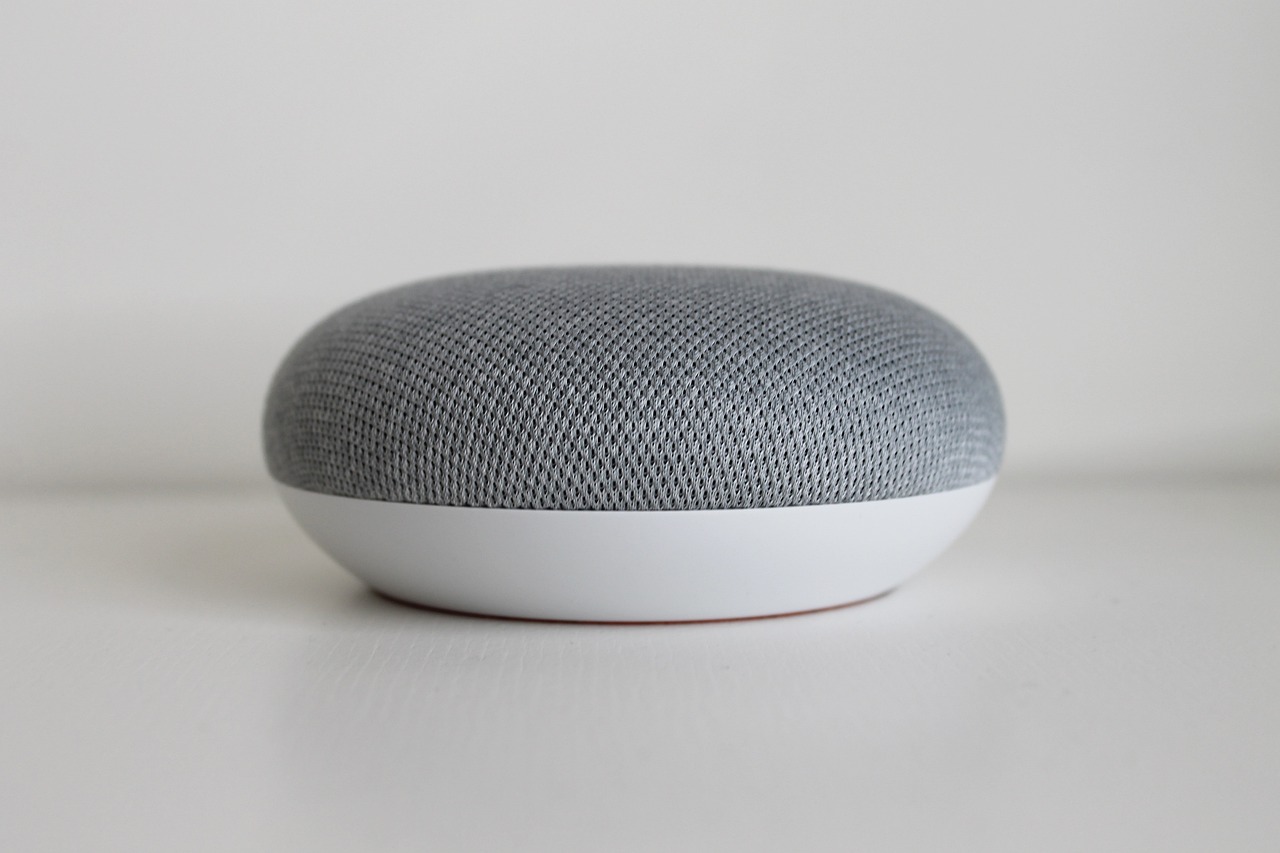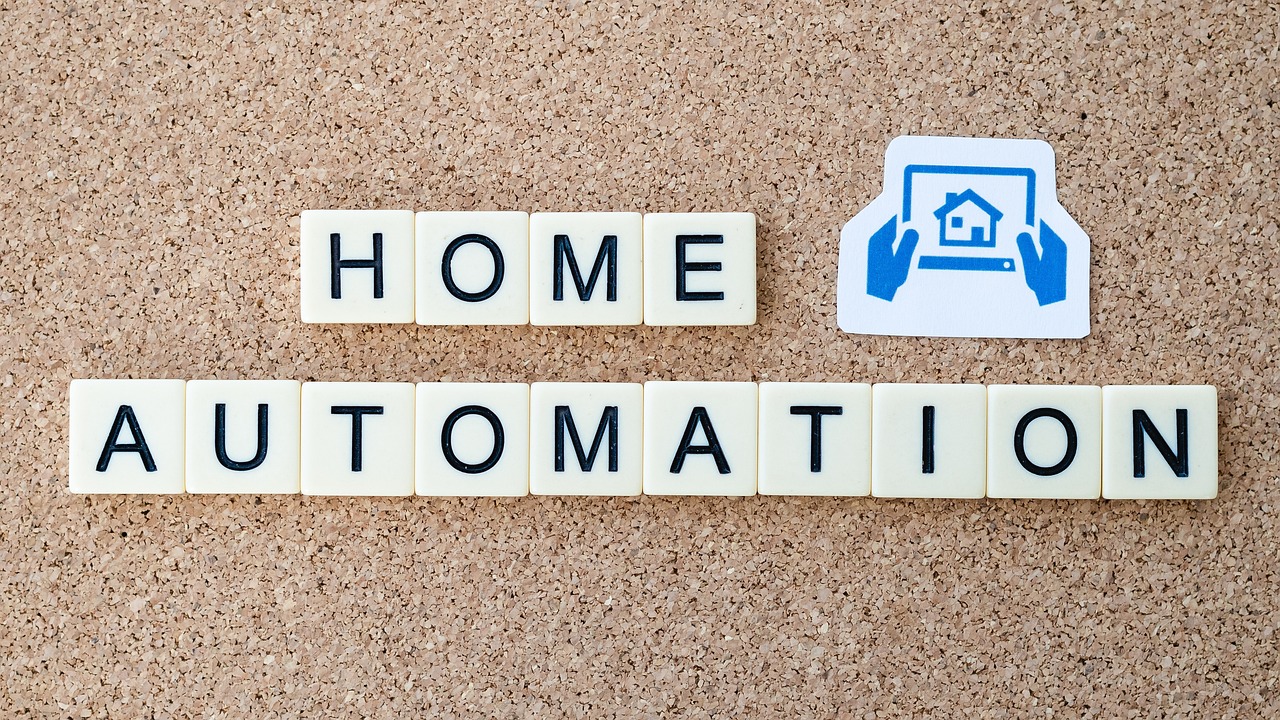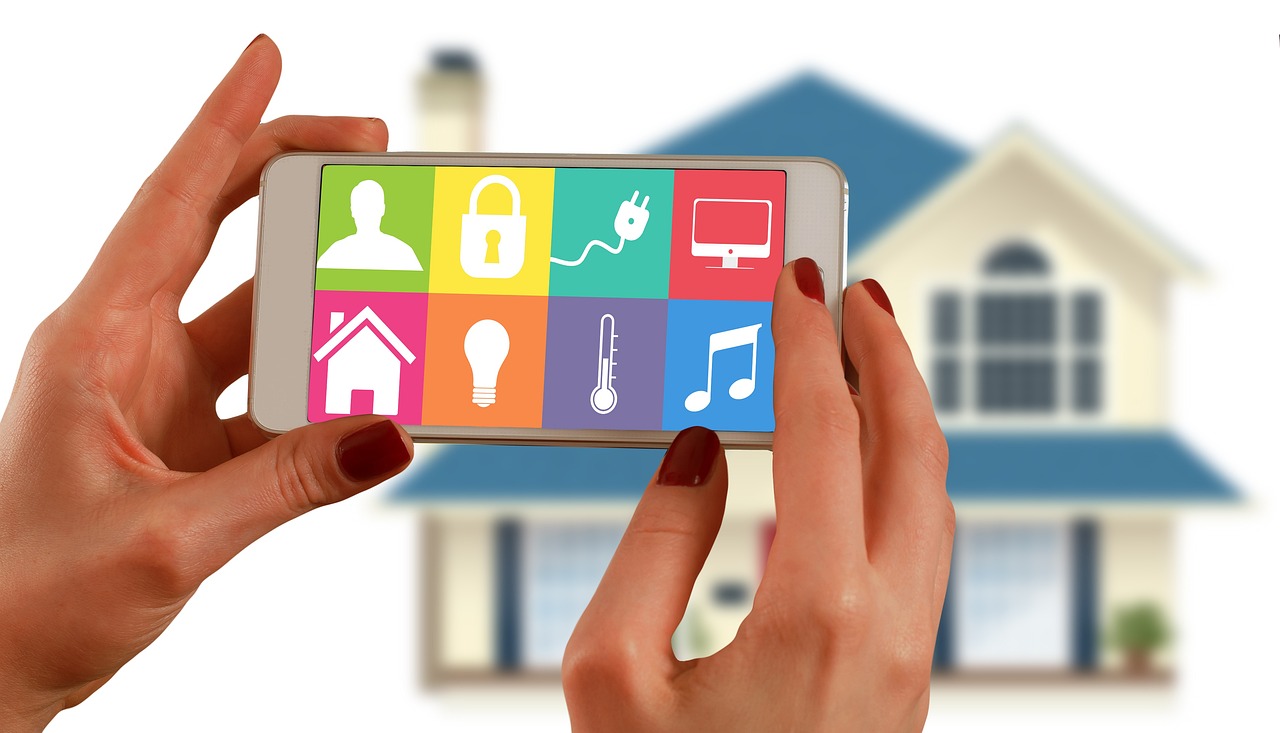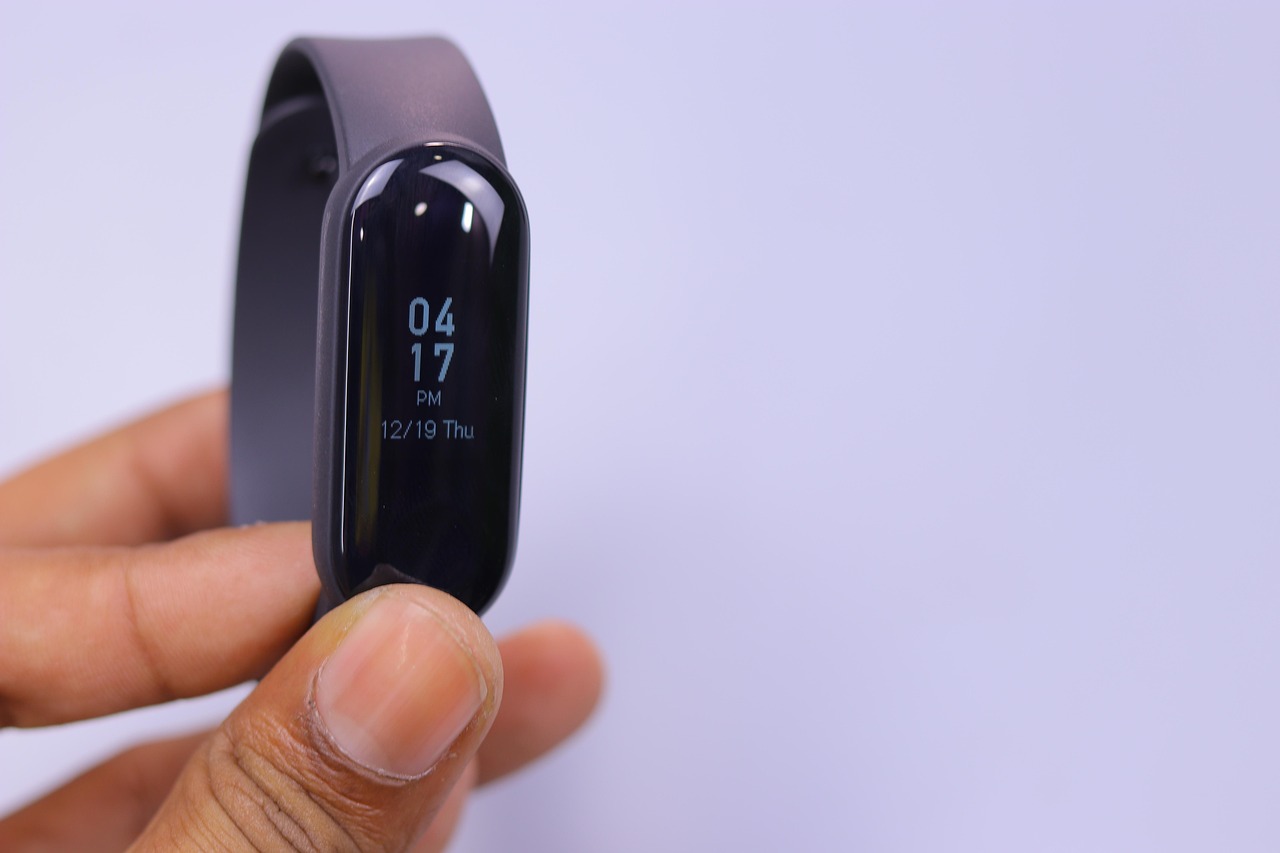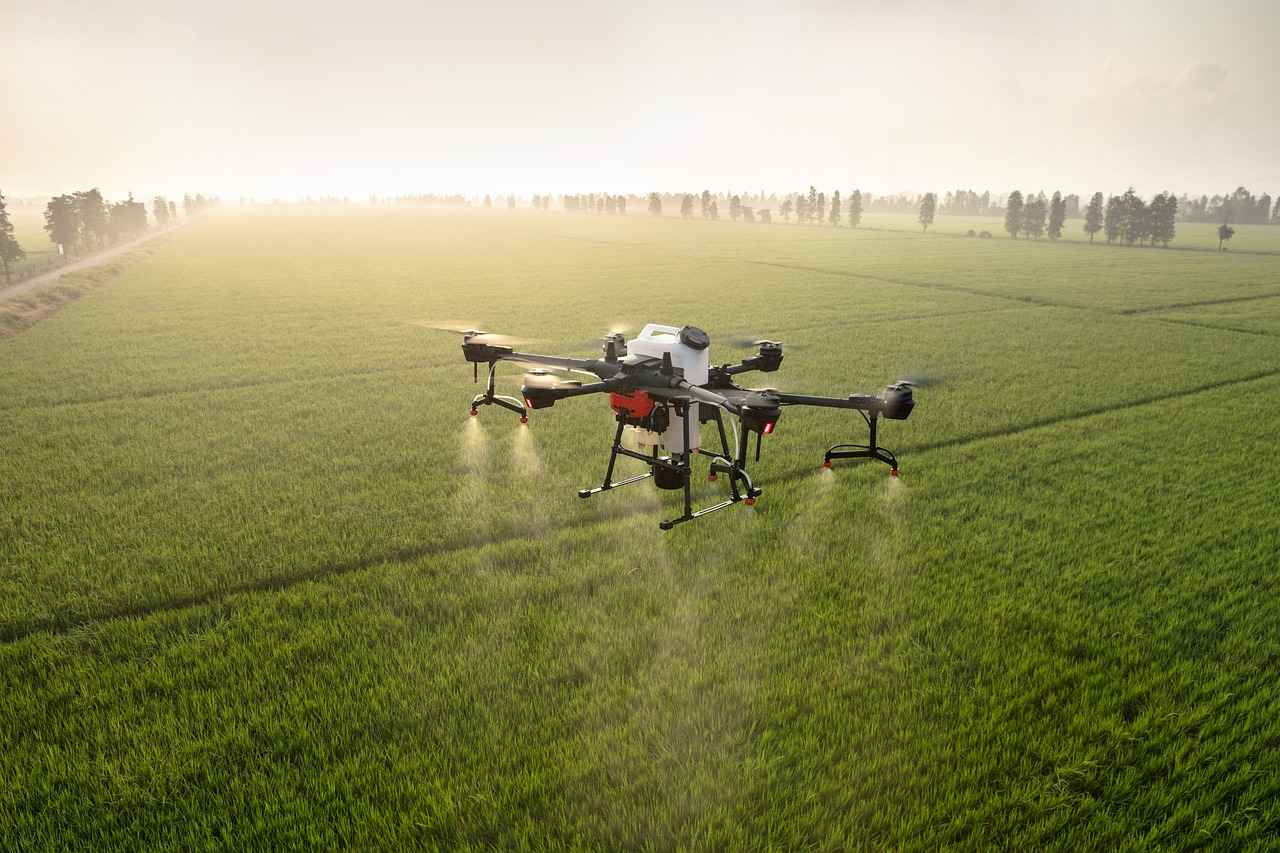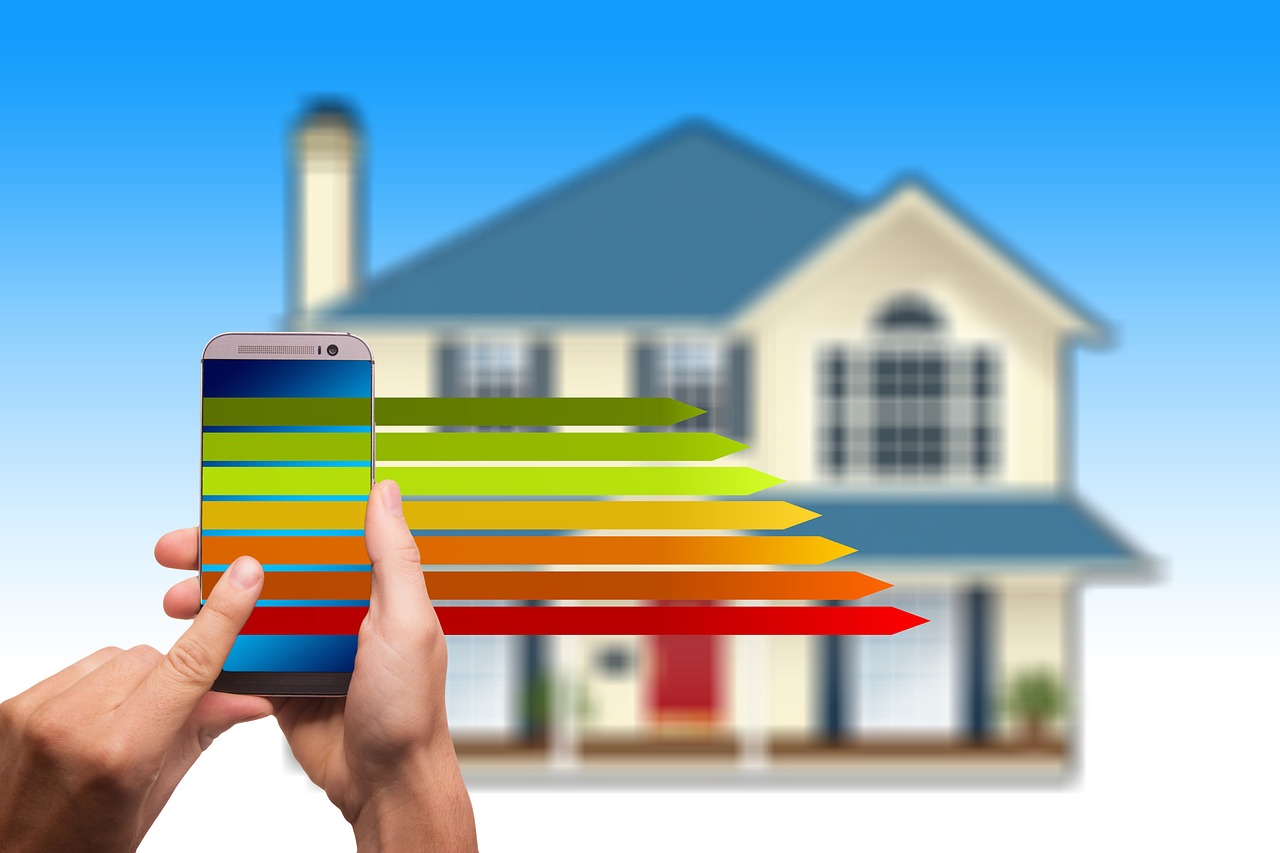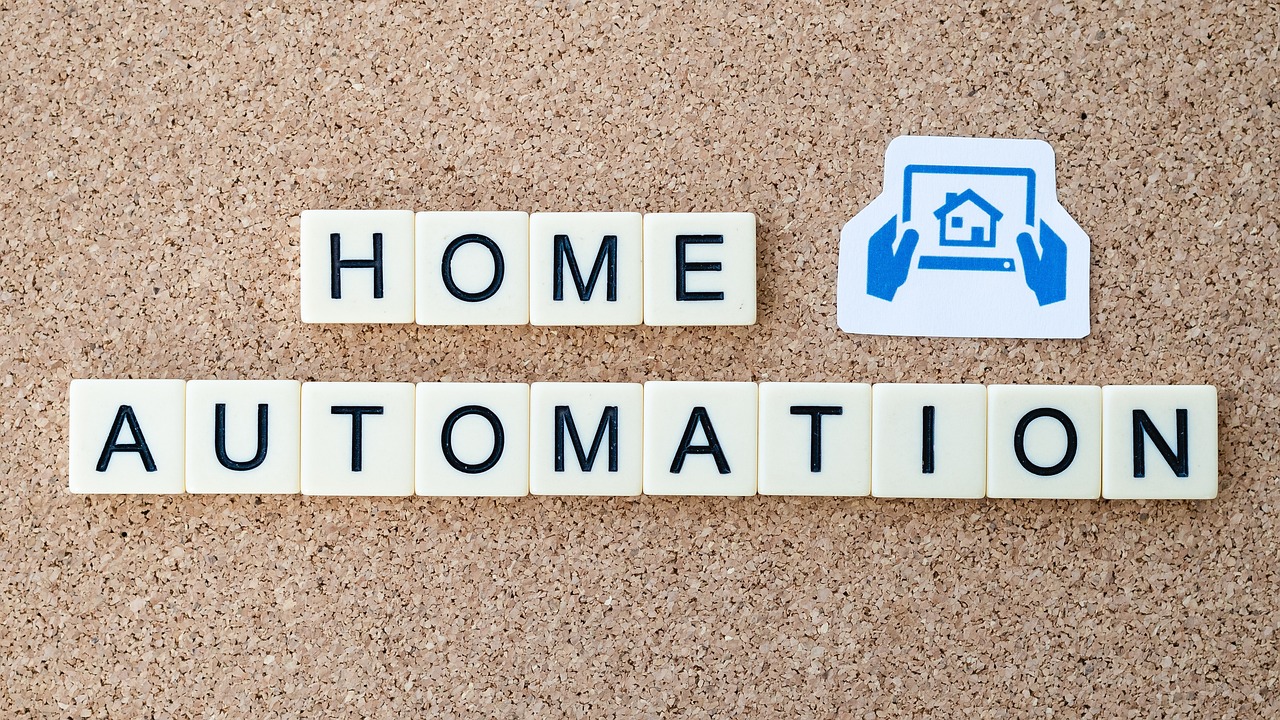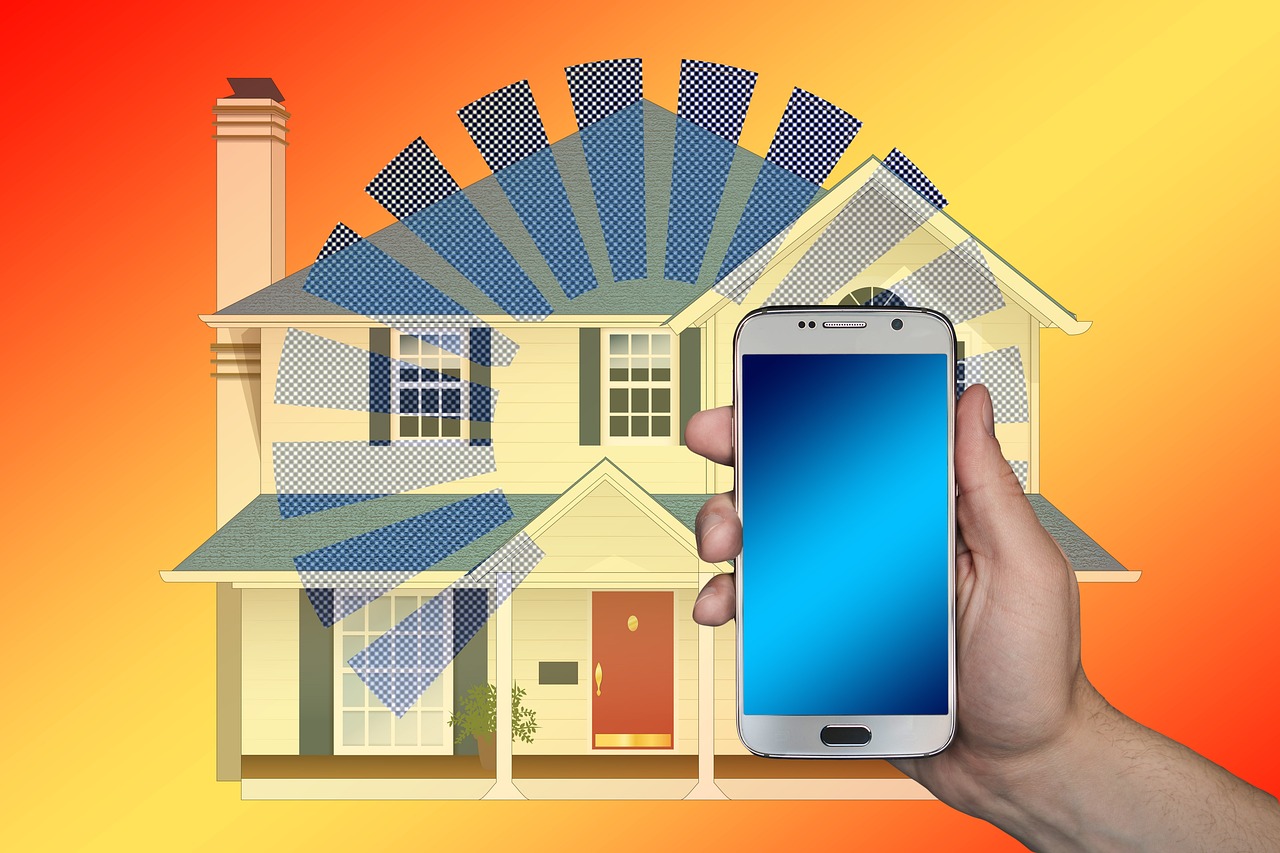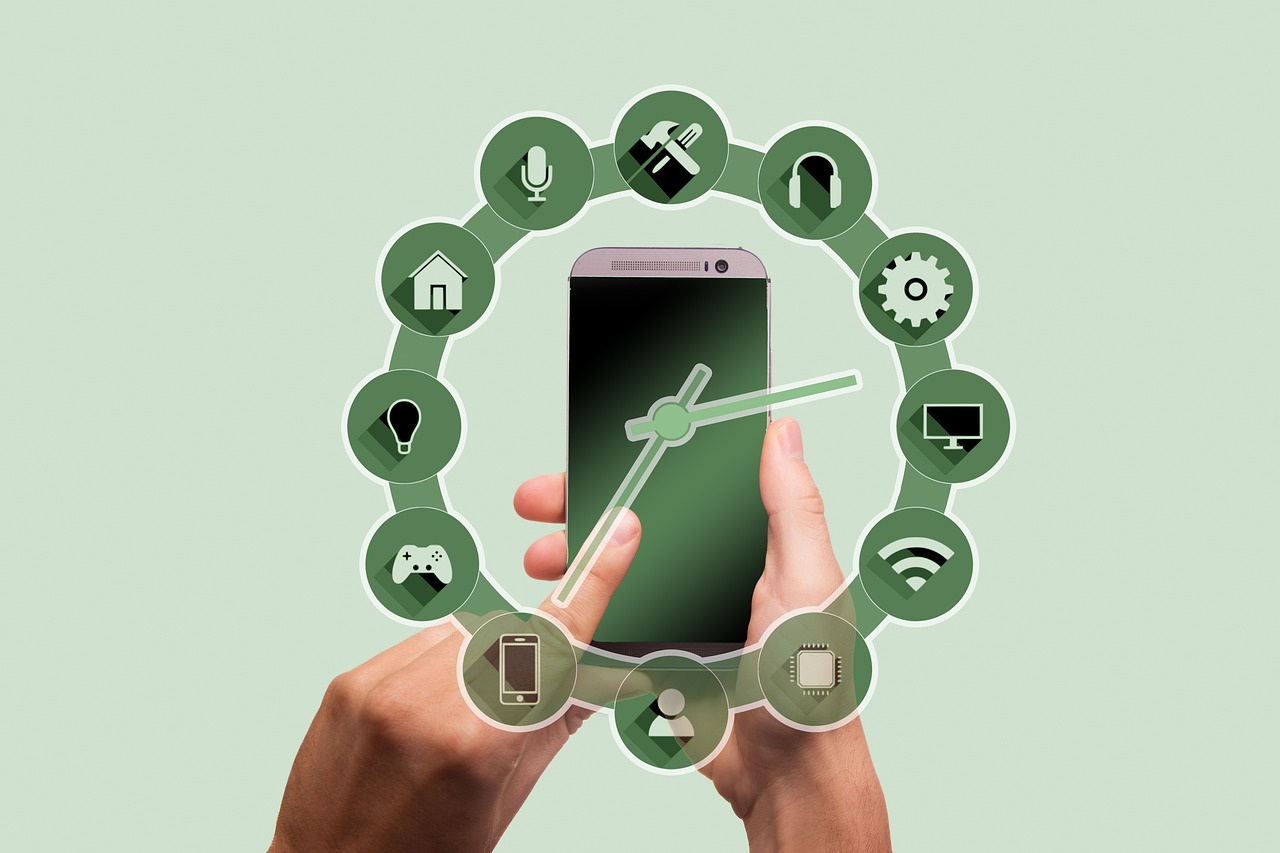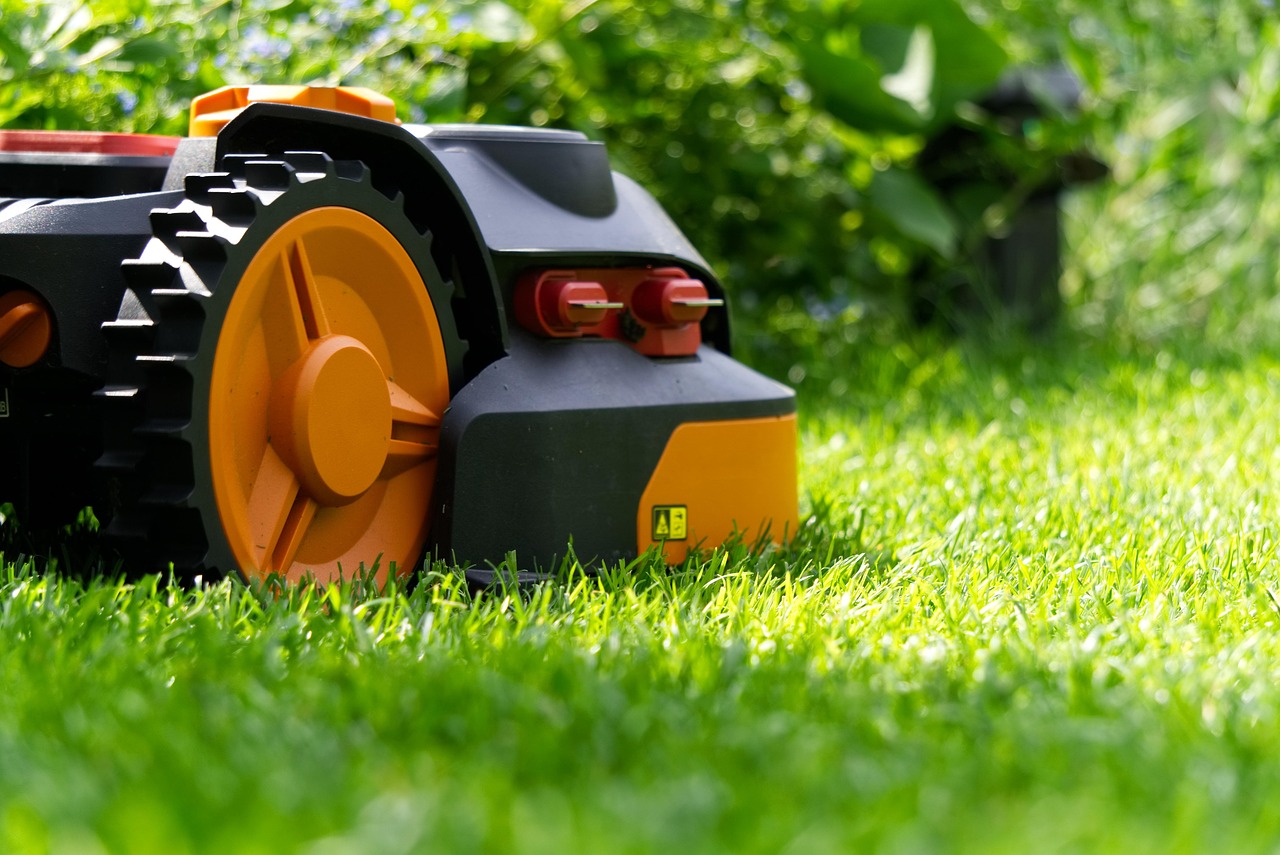This article delves into the world of smart home devices, highlighting essential gadgets that significantly enhance convenience, security, and energy efficiency. For homeowners eager to upgrade their living spaces, these devices provide innovative solutions that simplify daily tasks and improve overall quality of life.
1. Smart Speakers
Smart speakers act as the central hub of your smart home, enabling voice-activated control over various devices. These devices can play music, answer queries, and manage connected systems, making them indispensable for tech-savvy homeowners.
2. Smart Thermostats
Smart thermostats are designed to optimize energy usage by learning your preferences and adjusting temperatures accordingly. This not only enhances comfort but also leads to significant energy savings over time.
- Energy Efficiency Benefits: By adjusting heating and cooling schedules, smart thermostats can reduce energy costs.
- Remote Control Features: Many models offer mobile apps, allowing homeowners to adjust settings from anywhere.
- Integration with Other Devices: They can work seamlessly with other smart devices, creating a cohesive environment.
3. Smart Security Cameras
Enhance your home security with smart cameras that provide real-time monitoring and alerts. They allow homeowners to monitor their property remotely, ensuring peace of mind.
- Key Features: Look for night vision, motion detection, and two-way audio for comprehensive surveillance.
- Installation Options: Choose between wired and wireless models based on your preferences.
4. Smart Lighting Solutions
Smart lighting systems allow for personalized control over brightness and color through smartphones or voice commands. This flexibility creates tailored lighting experiences.
- Energy-Saving Advantages: Smart bulbs consume less energy, contributing to lower electricity bills.
- Automation and Scheduling: Set schedules for lights to enhance security and convenience.
5. Smart Plugs
Smart plugs are an affordable way to make existing appliances smarter, enabling remote control of any device plugged into them.
- Usage Scenarios: Use smart plugs for lamps, coffee makers, or holiday lights.
- Voice Control Integration: Many plugs work with voice assistants for hands-free operation.
6. Smart Doorbells
Smart doorbells offer video surveillance and two-way communication, allowing homeowners to see and speak to visitors remotely.
- Features to Look For: HD video, night vision, and motion detection are essential for effective monitoring.
- Installation Considerations: Some models may require professional installation for optimal performance.
Conclusion: Building Your Smart Home
By integrating these must-have smart home devices, homeowners can significantly enhance their living spaces. Each device offers unique benefits, and selecting the right combination can lead to a highly personalized and efficient smart home experience.

1. Smart Speakers
Smart speakers have revolutionized the way homeowners interact with their living spaces, serving as a central hub for voice-activated control. These devices enable users to manage a variety of smart home devices effortlessly, enhancing convenience and connectivity throughout the home.
One of the most appealing features of smart speakers is their ability to play music. With just a simple voice command, homeowners can enjoy their favorite playlists or discover new tunes. Moreover, these speakers can answer questions, provide weather updates, and even read the news, making them an invaluable source of information.
Beyond entertainment and information, smart speakers play a crucial role in managing smart home systems. They can control smart lights, thermostats, and security cameras, allowing homeowners to create a fully integrated smart home environment. For instance, by saying, “Goodnight,” a user can program the speaker to turn off lights, lower the thermostat, and lock the doors, all in one command.
Additionally, smart speakers support various voice assistants, such as Amazon Alexa, Google Assistant, and Apple Siri, providing flexibility depending on user preference. This compatibility allows for extensive integration with third-party devices, enhancing the overall smart home experience.
Security is another significant benefit of smart speakers. They can be linked to smart security systems, enabling homeowners to monitor their property through voice commands. For example, asking the speaker to show the camera feed or alert the homeowner of any unusual activity can provide peace of mind.
In summary, smart speakers are essential devices for tech-savvy homeowners seeking to enhance their living environments. With their ability to control various devices, provide information, and contribute to home security, they are a must-have for anyone looking to embrace the smart home lifestyle.

2. Smart Thermostats
Smart Thermostats are revolutionizing the way we manage our home environments. These innovative devices not only enhance comfort but also play a crucial role in promoting energy efficiency. By learning user preferences, smart thermostats can automatically adjust heating and cooling settings, ensuring that your home is always at the ideal temperature.
One of the key advantages of smart thermostats is their ability to optimize energy usage. They monitor your habits and adjust the temperature accordingly, which can lead to significant energy savings over time. For instance, if you typically leave for work at 8 AM, the thermostat may lower the heating or cooling during that time to save energy and then return to your preferred temperature just before you arrive home.
Moreover, many smart thermostats come equipped with advanced features such as remote control capabilities. Homeowners can easily adjust settings from their smartphones, ensuring that they can manage their energy consumption even when they are away. This is particularly beneficial for those who travel frequently or have unpredictable schedules.
Another significant benefit is the integration with other smart home devices. Smart thermostats can work in harmony with smart sensors, lighting systems, and even smart speakers, creating a fully automated home environment. This interconnectedness not only enhances convenience but also contributes to a more efficient energy management system.
Popular models such as Nest and Ecobee offer unique features tailored to different needs, making them favorites among homeowners looking to upgrade their systems. With their user-friendly interfaces and robust functionalities, these devices are designed to meet the demands of modern living.
| Feature | Nest | Ecobee |
|---|---|---|
| Learning Capability | Yes | Yes |
| Remote Access | Mobile App | Mobile App |
| Integration | Smart Home Compatible | Smart Home Compatible |
In conclusion, investing in a smart thermostat is a smart choice for homeowners looking to enhance comfort while also saving on energy costs. With their ability to learn user preferences, provide remote control, and integrate with other smart devices, these thermostats are essential components of a modern smart home.
2.1. Energy Efficiency Benefits
Smart thermostats have revolutionized the way we manage heating and cooling in our homes. By intelligently adjusting heating and cooling schedules based on user preferences and patterns, these devices can lead to substantial energy savings and lower utility bills. Homeowners can benefit from a variety of features that enhance energy efficiency, making smart thermostats a wise investment.
- Adaptive Learning: Many smart thermostats are equipped with learning algorithms that analyze your daily routines. For instance, if you typically leave for work at 8 AM, the thermostat can adjust the temperature accordingly, ensuring that energy is not wasted while you’re away.
- Energy Reports: Regular energy usage reports provide homeowners with insights into their heating and cooling habits. This data allows for informed decisions about energy consumption and potential savings.
- Geofencing Technology: Some models use geofencing to track your location via smartphone. When you leave a designated area, the thermostat can automatically adjust to an energy-saving mode, ensuring efficiency without sacrificing comfort.
- Integration with Renewable Energy: Smart thermostats can also be integrated with renewable energy sources, such as solar panels. This allows homeowners to optimize their energy usage based on the availability of solar power, further enhancing energy efficiency.
In addition to these features, smart thermostats often come with mobile applications that allow users to monitor and control their home’s temperature from anywhere. This capability is especially beneficial for those who travel frequently or have unpredictable schedules, as it enables adjustments to be made on the go.
Ultimately, the adoption of smart thermostats not only promotes energy efficiency but also contributes to a more sustainable lifestyle. By making informed decisions based on usage patterns and preferences, homeowners can significantly reduce their energy costs while maintaining a comfortable living environment.
2.1.1. Remote Control Features
Remote Control Features of Smart Thermostats
In today’s fast-paced world, remote control features in smart thermostats have become a game-changer for homeowners. These innovative devices allow users to manage their home’s heating and cooling systems from virtually anywhere, providing unparalleled convenience and efficiency.
Convenience at Your Fingertips
With the help of dedicated mobile apps, homeowners can easily adjust their thermostat settings while on the go. Whether you’re at work, on vacation, or simply out running errands, you can ensure your home is at the perfect temperature upon your arrival. This feature not only enhances comfort but also empowers users to make real-time adjustments based on changing plans or unexpected weather conditions.
Energy Management Made Easy
One of the most significant advantages of remote control capabilities is the potential for energy savings. Homeowners can monitor their energy consumption patterns through the app, allowing for informed decisions about heating and cooling schedules. For instance, if you forget to adjust the thermostat before leaving for a trip, you can easily do so from your phone, thus avoiding unnecessary energy use and lowering your utility bills.
Integration with Smart Home Systems
Moreover, many smart thermostats can integrate seamlessly with other smart home devices, such as lighting systems and security cameras. This integration allows for automated routines that can enhance energy efficiency and security. For example, you can set your thermostat to lower the temperature when you leave home and raise it again shortly before your return, all controlled via your smartphone.
Conclusion
In summary, the remote control features of smart thermostats provide homeowners with the ability to manage their home’s climate efficiently and conveniently. This technology not only enhances comfort but also significantly contributes to energy savings, making it an essential feature for any tech-savvy homeowner.
2.1.2. Integration with Other Devices
Integration with Other Devices is a crucial aspect of modern smart home technology, particularly when it comes to smart thermostats. These devices not only manage temperature but also enhance the overall functionality of a smart home ecosystem. By connecting with various other smart home devices, smart thermostats create a seamless and automated environment that promotes efficiency and convenience.
Smart thermostats can easily integrate with a variety of devices, including motion sensors, smart speakers, and smart lighting systems. For example, when a motion sensor detects that no one is home, the thermostat can automatically adjust the temperature to save energy. This integration not only reduces energy costs but also ensures that the home remains comfortable when residents return.
Additionally, when paired with smart speakers, homeowners can control their thermostat using voice commands. Imagine walking into your home and simply saying, “Set the temperature to 72 degrees,” and having the thermostat respond instantly. This level of convenience is a game-changer for busy families and tech-savvy individuals alike.
Moreover, smart thermostats can work in conjunction with smart lighting to enhance energy efficiency. For instance, when the thermostat detects that the home is empty, it can signal the smart lighting system to turn off lights, further conserving energy. This interconnectedness helps create a cohesive environment where everything works in harmony.
In summary, the integration of smart thermostats with other smart home devices significantly enhances the user experience. It allows for automated adjustments based on real-time data, ensuring comfort while promoting energy efficiency. As technology continues to evolve, the possibilities for seamless integration will only expand, making smart thermostats an essential component of any modern smart home.
2.2. Popular Models
When it comes to smart thermostats, Nest and Ecobee stand out as two of the most recognized brands in the market. Each model offers a range of features that cater to the diverse needs of homeowners, making them highly sought after for enhancing comfort and energy efficiency.
| Brand | Key Features | Unique Benefits |
|---|---|---|
| Nest |
|
|
| Ecobee |
|
|
Both brands offer advanced technology that not only optimizes energy usage but also enhances the overall comfort of your home. For instance, the Nest Learning Thermostat learns your habits over time and adjusts the temperature accordingly, while the Ecobee SmartThermostat utilizes room sensors to ensure even heating and cooling throughout your living space.
Choosing between these models often comes down to personal preferences and specific needs. For homeowners who prioritize learning capabilities and seamless integration with Google services, Nest may be the ideal choice. Conversely, those looking for comprehensive room monitoring and built-in voice control might prefer Ecobee.
In conclusion, both Nest and Ecobee provide exceptional smart thermostat options that can significantly enhance energy efficiency and comfort in any home. Evaluating the unique features and benefits of each can help homeowners make an informed decision that best suits their lifestyle.

3. Smart Security Cameras
In today’s world, smart security cameras have become an essential component of home security systems. They offer homeowners the ability to monitor their property in real-time, providing unmatched peace of mind. With advancements in technology, these devices have evolved to include a range of features that enhance their effectiveness and usability.
Real-Time Monitoring and Alerts
Smart security cameras enable homeowners to keep an eye on their property from virtually anywhere. Using mobile applications, users can receive instant notifications of any unusual activity, allowing for quick responses to potential threats. The ability to view live footage directly from smartphones or tablets ensures that homeowners are always connected to their home environment.
Key Features to Look For
- Night Vision: Essential for monitoring during low-light conditions, night vision capabilities ensure that security cameras remain effective around the clock.
- Motion Detection: This feature triggers alerts when movement is detected, allowing homeowners to respond promptly to unexpected visitors.
- Two-Way Audio: This allows homeowners to communicate directly with anyone near the camera, enhancing security and interaction.
- Cloud Storage: Many smart cameras offer cloud storage options for recorded footage, making it easy to access past events when needed.
Installation Options
Homeowners can choose between wired and wireless smart security cameras. Wireless cameras are often easier to install and offer more flexibility in terms of placement. However, wired cameras can provide a more stable connection and may be preferred for larger properties.
Conclusion
Investing in smart security cameras is a proactive step towards ensuring the safety of your home. With features that cater to modern security needs, these devices not only enhance protection but also provide homeowners with the confidence they need to trust their home security systems.
3.1. Key Features
Key Features of Smart Security Cameras
Smart security cameras have become essential components of modern home security systems. These devices are designed to provide homeowners with peace of mind by offering robust surveillance capabilities. Below, we explore the key features that make smart security cameras invaluable for safeguarding your property.
- Night Vision: Most smart security cameras come equipped with advanced night vision technology, allowing for clear video capture even in low-light conditions. This feature ensures that your home remains protected around the clock, regardless of the lighting.
- Motion Detection: Smart cameras utilize sophisticated motion detection algorithms to identify movement within their field of view. When motion is detected, users receive instant alerts on their smartphones, enabling them to respond promptly to potential threats.
- Two-Way Audio: This feature allows homeowners to communicate through the camera using built-in speakers and microphones. Whether it’s greeting a visitor or deterring an intruder, two-way audio enhances interaction and security.
- Cloud Storage Options: Many smart security cameras offer cloud storage for recorded footage, ensuring that important video evidence is securely stored and easily accessible. This is crucial for reviewing incidents or providing evidence to law enforcement.
- Mobile App Integration: Most smart cameras come with dedicated mobile applications that enable users to view live feeds, adjust settings, and receive notifications from anywhere. This level of accessibility is a game-changer for modern security systems.
- Wide-Angle Lenses: To maximize coverage, many smart security cameras feature wide-angle lenses that can capture more of the surroundings. This reduces the number of cameras needed to monitor a space effectively.
In summary, these key features make smart security cameras versatile tools for home surveillance, offering enhanced security and convenience for homeowners. By investing in a quality smart security camera, you can significantly improve your home’s safety.
3.2. Installation Options
When it comes to enhancing home security, smart security cameras play a pivotal role. However, the choice between wired and wireless cameras can significantly impact not only the installation process but also the overall functionality and flexibility of your security setup.
Wired Cameras: These cameras are typically hardwired into your home’s electrical system and can offer a reliable connection without the risk of interference. They are often preferred for their stability and consistent power supply. However, installation can be more complex, requiring drilling and running cables through walls, which may necessitate professional help. This option is ideal for homeowners looking for a permanent security solution.
Wireless Cameras: On the other hand, wireless cameras provide greater flexibility in terms of placement. They can be installed in various locations without the constraints of wiring, allowing homeowners to adjust their security setup as needed. Wireless options are particularly beneficial for renters or those who frequently rearrange their living spaces. However, they require a reliable Wi-Fi connection and may be susceptible to interference from other wireless devices.
When considering installation, homeowners should evaluate their specific needs:
- Location: Determine where you want to place your cameras for optimal coverage.
- Accessibility: Consider how easy it will be to access the cameras for maintenance or adjustments.
- Technical Skills: Assess whether you feel comfortable with DIY installation or if you prefer to hire a professional.
Ultimately, both wired and wireless cameras offer unique advantages. The decision should be based on your individual preferences, installation capabilities, and the specific security needs of your home. By carefully weighing these factors, you can ensure a more effective and efficient home security system.

4. Smart Lighting Solutions
Smart Lighting Solutions are revolutionizing the way homeowners experience light in their living spaces. These innovative systems allow users to control brightness and color effortlessly, creating a personalized ambiance that can adapt to any occasion. Whether you’re hosting a dinner party, winding down after a long day, or enhancing your home security, smart lighting offers the flexibility and convenience that modern homeowners crave.
- Remote Control: With smart lighting, you can adjust your lights from anywhere using your smartphone or tablet. This feature is particularly useful for controlling lights when you are away from home.
- Voice Activation: Many smart lighting systems integrate with popular voice assistants like Amazon Alexa and Google Assistant, allowing you to control your lights hands-free.
- Customizable Settings: Homeowners can create different lighting scenes for various activities, such as reading, relaxing, or entertaining, enhancing the overall atmosphere of their home.
One of the most significant advantages of smart lighting solutions is their energy efficiency. Smart bulbs consume less energy than traditional incandescent bulbs, which can lead to noticeable savings on your electricity bill. Additionally, many systems allow you to set schedules or timers to ensure lights are only on when needed, further reducing energy consumption.
Smart lighting systems can be programmed to turn on and off at specific times, providing an added layer of security by making it appear as though someone is home even when you’re away. This feature can deter potential intruders and enhance your peace of mind.
There are several brands and models of smart lighting available in the market, including:
- Philips Hue: Known for its wide range of color options and compatibility with various smart home systems.
- LIFX: Offers bright, vibrant colors and does not require a hub for operation.
- Wyze Bulbs: Affordable options that provide excellent features without breaking the bank.
In conclusion, smart lighting solutions not only enhance the aesthetic appeal of your home but also contribute to significant energy savings and improved security. By investing in these technologies, homeowners can create a more comfortable and efficient living environment.
4.1. Energy-Saving Advantages
In today’s world, where energy efficiency is becoming increasingly important, smart lighting solutions are a game changer for homeowners looking to reduce their energy consumption. One of the most significant benefits of smart bulbs is their ability to consume less energy compared to traditional incandescent or fluorescent bulbs. This not only leads to lower electricity bills but also contributes to a more sustainable environment.
Smart bulbs utilize LED technology, which is inherently more energy-efficient. For instance, while a standard incandescent bulb might use around 60 watts of energy, a comparable smart LED bulb can achieve the same brightness with as little as 10 watts. This dramatic reduction in energy usage can result in substantial savings over time, especially when multiple bulbs are used throughout a home.
Moreover, the programmable features of smart bulbs allow homeowners to set schedules for when the lights should turn on or off. This means that lights can be programmed to automatically turn off when rooms are unoccupied, further minimizing wasted energy. For example, if you often forget to turn off the lights in the evening, you can set your smart bulbs to turn off at a specific time, ensuring that energy is not wasted unnecessarily.
In addition to scheduling, many smart bulbs offer motion detection capabilities. This feature allows lights to turn on automatically when someone enters a room and turn off when they leave, providing convenience while also conserving energy. This is particularly useful in areas like hallways or bathrooms, where lights are often left on for extended periods.
Overall, the energy-saving advantages of smart bulbs make them an essential component of any modern smart home. By investing in these innovative lighting solutions, homeowners can enjoy enhanced convenience and significant cost savings on their energy bills.
4.2. Automation and Scheduling
Automation and Scheduling in smart lighting systems can transform the way homeowners interact with their living spaces. By utilizing these features, homeowners can not only manage their lighting more efficiently but also enhance their home’s security and energy efficiency.
One of the key benefits of smart lighting is the ability to set schedules for when lights turn on and off. This feature allows homeowners to program their lights to illuminate at specific times, creating the illusion that someone is home, even when they are away. This can be particularly useful for deterring potential intruders and enhancing overall home security.
Moreover, smart lighting systems often come with mobile applications that enable homeowners to control their lights remotely. This means that even if you forget to turn off the lights before leaving for vacation, you can do so from anywhere in the world. Additionally, many systems allow for customization of lighting scenes, adapting the ambiance for different occasions, such as movie nights or dinner parties.
Another exciting aspect is the integration of smart lighting with other smart home devices. For instance, lights can be programmed to turn on automatically when a smart doorbell detects motion or when a homeowner arrives home. This level of automation not only adds convenience but also enhances the overall smart home experience.
- Enhanced Security: Lights can mimic occupancy patterns to deter burglars.
- Energy Savings: Automated schedules help reduce unnecessary energy consumption.
- Convenience: Easily control lights from your smartphone or voice assistant.
In conclusion, the automation and scheduling features of smart lighting systems provide homeowners with enhanced control, security, and energy efficiency. By implementing these technologies, homeowners can create a more responsive and intelligent living environment.

5. Smart Plugs
Smart Plugs are essential devices for any modern homeowner seeking to enhance their living environment with technology. These innovative gadgets allow users to control any appliance plugged into them remotely, transforming ordinary devices into smart ones with minimal effort and cost.
One of the primary advantages of smart plugs is their affordability. They provide a simple and cost-effective way to upgrade existing appliances without the need for a complete overhaul. Homeowners can easily plug their devices into smart plugs and control them through a mobile app or voice commands.
- Lighting Control: Smart plugs can turn lamps on and off remotely, allowing for convenient lighting management.
- Appliance Management: Homeowners can schedule coffee makers to brew at specific times, ensuring a fresh cup of coffee is ready when they wake up.
- Holiday Decorations: Smart plugs make it easy to control festive lights, enabling users to turn them on or off with a simple command.
Many smart plugs are compatible with popular voice assistants like Amazon Alexa and Google Assistant. This functionality allows users to operate their devices hands-free, enhancing daily routines and providing a seamless smart home experience.
Some advanced smart plugs come equipped with energy monitoring capabilities. These features help homeowners track energy consumption, identify power-hungry devices, and make informed decisions to reduce electricity bills. By analyzing usage patterns, users can optimize their energy consumption and contribute to a more sustainable environment.
In summary, smart plugs are a versatile and affordable solution for homeowners looking to integrate technology into their daily lives. With their ease of use and potential for energy savings, they represent a significant step towards creating a more connected and efficient home.
5.1. Usage Scenarios
Smart plugs are versatile devices that can transform the way homeowners interact with their appliances. By enabling remote control and automation, they offer a wide range of applications that enhance daily living. Here, we explore several practical usage scenarios for smart plugs, showcasing their convenience and functionality.
- Automating Home Lighting: Smart plugs can easily control lamps and lights, allowing homeowners to set schedules for when they turn on and off. This feature not only enhances security by simulating occupancy but also provides a cozy atmosphere when returning home.
- Controlling Kitchen Appliances: Imagine brewing your morning coffee from the comfort of your bed. With smart plugs, you can schedule your coffee maker to start brewing at a specific time, ensuring a fresh cup awaits you as you wake up.
- Managing Holiday Decorations: During festive seasons, smart plugs can simplify the management of holiday lights. Homeowners can program their decorations to turn on at sunset and off at midnight, eliminating the hassle of manual operation.
- Energy Monitoring: Many smart plugs come equipped with energy monitoring features, enabling users to track the power consumption of connected devices. This insight can lead to more informed decisions about energy usage and savings.
- Remote Control: Whether at work or on vacation, smart plugs allow homeowners to control their devices remotely via smartphone apps. This capability ensures that you can turn off any forgotten appliance, providing peace of mind.
- Voice Activation: Most smart plugs are compatible with popular voice assistants like Amazon Alexa or Google Assistant. This means you can turn devices on or off using simple voice commands, adding an extra layer of convenience to your daily routine.
In summary, smart plugs are not just about convenience; they are about enhancing the overall efficiency and security of your home. By integrating these devices into your daily life, you can enjoy a seamless and automated experience that caters to your specific needs.
5.2. Voice Control Integration
Voice Control Integration is a game-changer in the realm of smart home technology, especially when it comes to smart plugs. These devices allow homeowners to control various appliances and electronics with just their voice, making everyday tasks more convenient and efficient.
With the rise of voice assistants like Amazon Alexa, Google Assistant, and Apple Siri, integrating smart plugs into your home automation system has never been easier. Users can simply issue commands such as “turn on the lamp” or “switch off the coffee maker,” eliminating the need to manually operate switches or apps. This hands-free operation is particularly beneficial for individuals with mobility challenges or those who are busy multitasking.
Moreover, the compatibility of smart plugs with voice assistants enhances the overall smart home experience. Homeowners can create routines where multiple devices respond to a single command. For instance, saying “Goodnight” could turn off all lights and appliances connected to smart plugs throughout the house. This level of automation not only adds convenience but also contributes to energy savings by ensuring devices are not left on unnecessarily.
Additionally, smart plugs often come with mobile applications that allow users to monitor their energy consumption. This feature is particularly useful for tracking usage patterns and identifying devices that may be consuming more power than necessary. By integrating voice control, homeowners can quickly check energy usage or turn off devices without navigating through multiple menus on their smartphones.
In conclusion, voice control integration with smart plugs is a pivotal advancement in smart home technology. It empowers users to manage their devices effortlessly while promoting energy efficiency and enhancing overall convenience in daily routines.

6. Smart Doorbells
Smart doorbells have revolutionized the way homeowners interact with visitors at their doorsteps. These innovative devices not only enhance home security but also provide convenience and peace of mind. By integrating video surveillance and two-way communication, smart doorbells allow homeowners to see and speak to visitors remotely, no matter where they are.
Key Features of Smart Doorbells
- Video Surveillance: Most smart doorbells come equipped with high-definition cameras that provide clear video feeds. This feature enables homeowners to monitor their front door in real-time.
- Two-Way Communication: With built-in microphones and speakers, users can communicate with visitors directly through their smartphones, making it easy to greet guests or deter unwanted visitors.
- Motion Detection: Many models include motion sensors that send alerts to homeowners when someone approaches the door, ensuring that they are always aware of activity at their entrance.
- Night Vision: Enhanced visibility in low-light conditions allows homeowners to maintain security even during the night.
Installation Considerations
Installing a smart doorbell is often a straightforward process. Most devices can replace existing doorbells, requiring minimal tools and expertise. However, some advanced models may necessitate professional installation to maximize their functionalities.
Benefits of Smart Doorbells
- Increased Home Security: By allowing homeowners to see who is at the door, smart doorbells help prevent package theft and other security breaches.
- Convenience: Homeowners can check their doorbell feeds from anywhere, enabling them to manage deliveries and visitors without being physically present.
- Integration with Smart Home Systems: Many smart doorbells can be integrated with other smart home devices, creating a cohesive and automated home security system.
In conclusion, smart doorbells are a must-have for tech-savvy homeowners seeking to enhance their home security and convenience. With features like video surveillance and two-way communication, these devices provide peace of mind and a modern solution for managing home entry.
6.1. Features to Look For
When selecting a smart doorbell, it is essential to evaluate various features that enhance its functionality and security capabilities. A smart doorbell is more than just a device to see who is at your door; it serves as a comprehensive security solution for your home.
- HD Video Quality: Look for doorbells that offer high-definition video resolution. This feature ensures that you can clearly see the person at your door, making identification easier.
- Night Vision: A smart doorbell with night vision capabilities allows for clear video recording even in low-light conditions. This is crucial for nighttime security.
- Motion Detection: Advanced motion detection alerts you when someone approaches your door, even if they don’t ring the bell. This feature can help deter potential intruders.
- Two-Way Audio: The ability to speak with visitors through the doorbell enhances security and convenience, allowing you to communicate without opening the door.
- Cloud Storage: Many smart doorbells offer cloud storage options for video recordings. This feature allows you to review footage later, which can be invaluable for security purposes.
- Integration with Smart Home Systems: Ensure that the doorbell is compatible with your existing smart home devices, such as smart locks and security cameras, for a seamless experience.
- Mobile App Control: A user-friendly mobile app allows you to monitor your doorbell remotely, receive notifications, and access recorded footage from anywhere.
In summary, selecting a smart doorbell involves considering these critical features to ensure comprehensive monitoring and enhanced security for your home. Investing in a quality smart doorbell not only improves your home’s safety but also adds convenience to your daily life.
6.2. Installation Considerations
Installing a smart doorbell can greatly enhance your home’s security and convenience. While many models are designed for easy installation, there are several factors to consider to ensure optimal performance and functionality.
- Ease of Installation: Many smart doorbells are designed to replace existing doorbells, making the process straightforward for homeowners. Typically, these devices come with detailed instructions that guide users through the installation process, often requiring just a few basic tools.
- Wiring Requirements: Some smart doorbells may require existing doorbell wiring to function properly. If your home lacks the necessary wiring, you may need to hire a professional electrician to install it, which can add to the overall cost.
- Wi-Fi Connectivity: A stable Wi-Fi connection is crucial for the functionality of smart doorbells. During installation, ensure that your doorbell is within range of your Wi-Fi router to avoid connectivity issues. If your router is too far away, consider using a Wi-Fi extender.
- Placement Height: The height at which you install your smart doorbell can affect its performance. It’s generally recommended to install it at a height of around 4.5 to 5 feet for optimal video capture and ease of use.
- Professional Installation: While many homeowners can handle the installation themselves, some advanced models may require professional installation to ensure all features function correctly. This is especially true for models that integrate with other smart home systems.
In conclusion, while installing a smart doorbell can often be a DIY project, considering the factors mentioned above will help you make informed decisions about whether to install it yourself or seek professional assistance. Proper installation not only maximizes the doorbell’s capabilities but also enhances your overall smart home experience.

7. Smart Home Hubs
Smart home hubs are essential components in the modern smart home ecosystem, acting as the central command center for various connected devices. By integrating multiple devices into a single platform, these hubs enable homeowners to manage their smart environments with ease and efficiency.
One of the key advantages of smart home hubs is their ability to centralize control. Instead of juggling different apps for each device, homeowners can use a single interface to control lights, thermostats, security cameras, and more. This not only simplifies the user experience but also enhances the overall functionality of the smart home.
| Feature | Description |
|---|---|
| Device Compatibility | Smart home hubs are designed to work with a wide range of devices, ensuring seamless integration. |
| Automation Capabilities | Users can create automated routines, such as turning off lights and locking doors at bedtime. |
| Voice Control | Many hubs support voice commands through virtual assistants, enhancing convenience. |
Moreover, smart home hubs facilitate automation, allowing homeowners to set schedules and routines that enhance their daily lives. For instance, a homeowner can program their hub to turn on the heating before they return home or to switch off all lights when they leave for work. This level of automation not only adds convenience but also contributes to energy efficiency.
When selecting a smart home hub, it is crucial to consider its compatibility with existing devices. Popular options like Samsung SmartThings, Amazon Echo Plus, and Google Nest Hub support a wide array of devices, ensuring that users can integrate their current technology without hassle.
In conclusion, smart home hubs are invaluable for anyone looking to streamline their smart home experience. By providing centralized control, facilitating automation, and ensuring compatibility with various devices, these hubs significantly enhance the convenience and efficiency of modern living.
7.1. Compatibility with Devices
Choosing the right smart home hub is crucial for homeowners looking to create a seamless and efficient smart home environment. A hub that is compatible with a wide range of devices not only enhances the functionality of your existing technology but also ensures that future upgrades and additions can be easily integrated.
When selecting a smart home hub, consider the following factors:
- Device Compatibility: Ensure that the hub supports a variety of brands and device types, including smart lights, thermostats, cameras, and more. This flexibility allows homeowners to mix and match devices based on their preferences.
- Protocol Support: Different devices may use various communication protocols such as Zigbee, Z-Wave, or Wi-Fi. A versatile hub should support multiple protocols to maximize compatibility.
- Future-Proofing: Technology is constantly evolving. Opt for a hub that receives regular updates and supports new devices as they become available, ensuring longevity in your smart home setup.
Additionally, a compatible hub simplifies the management of your devices. With a centralized platform, homeowners can:
- Create Automation Routines: Set up automated tasks that allow devices to work together. For example, lights can turn on when a smart doorbell is pressed, enhancing security and convenience.
- Control Devices Remotely: Access and manage your devices from anywhere using a smartphone app, providing peace of mind and flexibility.
- Monitor Energy Usage: Some hubs offer insights into energy consumption, helping homeowners make informed decisions about their usage patterns and save on bills.
In summary, choosing a smart home hub that is compatible with a wide range of devices is essential for homeowners who want to integrate their existing technology seamlessly. This not only enhances the overall smart home experience but also paves the way for future enhancements.
7.2. Automation Capabilities
Automation Capabilities of Smart Home Hubs
Smart home hubs are essential components of a modern smart home ecosystem, enabling users to create a seamless and automated living experience. One of the standout features of these hubs is their automation capabilities, which allow homeowners to program routines that enhance convenience and security.
For instance, imagine a typical evening routine. With a smart home hub, you can set up an automation that triggers multiple devices at once. When it’s time for bed, a single command can turn off all the lights, lock the doors, and adjust the thermostat to a comfortable sleeping temperature. This not only saves time but also ensures that everything is securely in place before you drift off to sleep.
Furthermore, automation can be customized to fit various scenarios throughout the day. For example, you can create a morning routine that gradually brightens the lights, starts the coffee maker, and plays your favorite morning playlist as you wake up. This level of personalization makes daily activities more enjoyable and efficient.
In addition to enhancing daily routines, automation capabilities also contribute to energy efficiency. By scheduling devices to operate at optimal times, homeowners can reduce energy consumption and lower utility bills. For instance, smart lights can be programmed to turn off automatically during the day when natural light is sufficient, or smart thermostats can adjust temperatures based on occupancy.
Moreover, smart home hubs can integrate with various sensors, such as motion detectors and door/window sensors, to enhance security. For example, if a motion sensor detects movement while you are away, the hub can automatically turn on outdoor lights and send an alert to your smartphone, providing peace of mind and a proactive approach to home security.
In summary, the automation capabilities of smart home hubs not only simplify daily tasks but also promote energy efficiency and security. By leveraging these features, tech-savvy homeowners can create a truly intelligent living environment that adapts to their needs.
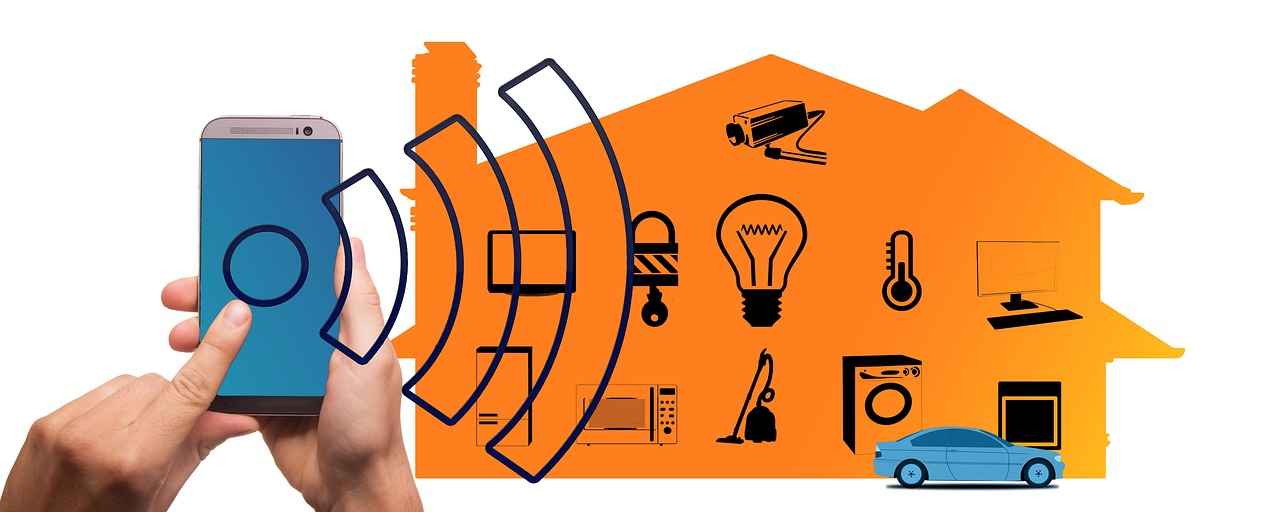
8. Smart Appliances
Smart appliances have revolutionized the way we manage our homes, providing a blend of convenience, efficiency, and connectivity. These devices, which include everything from refrigerators to washing machines, are designed to simplify daily tasks and enhance the overall living experience.
One of the most significant benefits of smart appliances is their ability to be controlled remotely. Homeowners can monitor and adjust settings from their smartphones, allowing for greater flexibility and control. For instance, a smart refrigerator can alert users when groceries are running low or suggest recipes based on available ingredients. This not only saves time but also reduces food waste.
Smart appliances are engineered to optimize energy consumption. For example, smart washing machines can automatically adjust water levels and cycle times based on the load size, leading to more efficient use of resources. This translates to lower utility bills and a smaller carbon footprint, making them an environmentally friendly option.
Leading brands such as Samsung and LG have made significant strides in the smart appliance market. These companies offer a range of products equipped with cutting-edge technology, ensuring that homeowners have access to the latest innovations. For example, Samsung’s Family Hub refrigerator not only keeps food fresh but also serves as a family communication center, displaying calendars and notes.
Smart appliances can easily integrate with existing smart home ecosystems, allowing for centralized control through smart home hubs. This integration enables automated routines, such as preheating the oven while the laundry is running, enhancing the efficiency of household management.
As technology continues to evolve, smart appliances are becoming indispensable in modern homes. They not only enhance convenience and efficiency but also promote sustainable living practices. Investing in these devices can significantly improve daily life, making them a must-have for any tech-savvy homeowner.
8.1. Benefits of Smart Appliances
Smart appliances are revolutionizing the way we manage our homes, offering a plethora of benefits that enhance both convenience and efficiency. These advanced devices not only simplify everyday tasks but also provide valuable insights into household management.
- Remote Control: One of the standout features of smart appliances is the ability to control them from anywhere using a smartphone app. Whether you’re at work or on vacation, you can adjust settings, start cycles, or check status updates with just a few taps.
- Maintenance Alerts: Smart appliances are equipped with sensors that monitor their performance. They can send alerts when maintenance is needed, helping to prevent costly repairs and ensuring that appliances operate efficiently.
- Recipe Suggestions: Some smart refrigerators can suggest recipes based on the ingredients you have on hand. This not only promotes creative cooking but also minimizes food waste, making meal planning easier than ever.
- Energy Efficiency: Many smart appliances are designed to optimize energy usage. They learn your habits and adjust their operations accordingly, leading to lower energy bills and a reduced carbon footprint.
- Integration with Other Smart Devices: Smart appliances can seamlessly integrate with other devices in your smart home ecosystem. For example, your smart oven can communicate with your smart thermostat to adjust the temperature when you’re cooking.
In summary, the benefits of smart appliances are numerous and impactful. By incorporating these devices into your home, you can enjoy enhanced functionality, improved energy efficiency, and a more streamlined cooking experience. As technology continues to evolve, the potential for smart appliances to transform our daily lives is boundless.
8.2. Popular Smart Appliance Brands
In the rapidly evolving landscape of smart home technology, leading brands like Samsung and LG have emerged as frontrunners, offering a diverse range of smart appliances designed to meet the demands of modern homeowners. These brands are at the forefront of innovation, integrating advanced features that enhance convenience, efficiency, and connectivity.
Samsung has made significant strides in the smart appliance market with products that showcase cutting-edge technology. For instance, their Family Hub Refrigerator not only keeps your food fresh but also allows users to manage groceries, view recipes, and even connect with family members through a built-in touchscreen. This multifunctionality exemplifies how Samsung caters to the needs of tech-savvy homeowners.
LG, on the other hand, is renowned for its SmartThinQ technology, which enables users to control appliances remotely via a smartphone app. Their Smart Washer and Dryer systems are equipped with features like cycle monitoring and energy usage tracking, making laundry day more efficient and less time-consuming. LG’s commitment to user-friendly designs and smart technology ensures that their appliances are not only functional but also intuitive.
| Brand | Featured Product | Key Features |
|---|---|---|
| Samsung | Family Hub Refrigerator | Touchscreen, grocery management, recipe suggestions |
| LG | Smart Washer and Dryer | Remote control, cycle monitoring, energy tracking |
Both brands emphasize energy efficiency and sustainability, aligning with the growing trend of eco-conscious consumerism. Many of their smart appliances are designed with features that help reduce energy consumption, ultimately benefiting both the environment and homeowners’ wallets.
Choosing the right smart appliance brand can significantly impact your home experience. With their innovative features and reliable performance, brands like Samsung and LG provide solutions that not only enhance daily living but also contribute to a smarter, more connected home.

9. Smart Blinds and Shades
Smart blinds and shades represent a significant advancement in home automation, offering homeowners unparalleled control over their living environment. These innovative window treatments can be easily managed through a smartphone app or voice commands, making it possible to adjust natural light levels and privacy with just a few taps or spoken words.
With smart blinds, you can effortlessly create the perfect ambiance in any room. Whether you want to enjoy bright, natural light during the day or ensure complete privacy at night, these devices provide a seamless solution. Homeowners can set schedules for their blinds to open or close at specific times, enhancing both convenience and energy efficiency.
One of the most significant advantages of smart blinds is their ability to contribute to energy savings. By regulating sunlight exposure, they help maintain a comfortable indoor temperature, reducing reliance on heating and cooling systems. This not only lowers energy bills but also promotes a more sustainable lifestyle.
Smart blinds come in a variety of styles, materials, and colors, allowing homeowners to choose options that best fit their interior design. From sleek roller shades to elegant Roman blinds, there is a perfect solution for every aesthetic preference. Additionally, many models can be tailored to fit unique window shapes and sizes.
These blinds can be integrated with other smart home devices, such as smart speakers and home automation systems. This integration allows for coordinated control, enabling homeowners to create routines that enhance their daily lives. For instance, you can program your blinds to open automatically when the sun rises or close when it gets dark, providing a truly automated living experience.
In conclusion, investing in smart blinds and shades not only enhances the aesthetic appeal of your home but also offers practical benefits, including energy efficiency and convenience. As technology continues to evolve, these devices are becoming essential components of modern smart homes.
9.1. Energy Efficiency Benefits
In today’s world, where energy conservation is paramount, smart blinds emerge as a revolutionary solution for optimizing indoor environments. By effectively managing sunlight exposure, these innovative window treatments play a critical role in regulating indoor temperatures, thereby enhancing both energy savings and overall comfort.
Smart blinds utilize advanced technology to adjust their position based on the time of day and the intensity of sunlight. This automated functionality ensures that homes remain cool during hot afternoons and warm during chilly evenings, reducing the reliance on heating and cooling systems. As a result, homeowners can experience significant reductions in their energy bills.
| Benefits of Smart Blinds | Impact on Energy Consumption |
|---|---|
| Automated Light Control | Reduces the need for artificial lighting |
| Temperature Regulation | Minimizes heating and cooling costs |
| Privacy Management | Allows for natural light without compromising privacy |
Moreover, integrating smart blinds with a smart home system can further enhance their efficiency. Homeowners can program these blinds to open and close at specific times, aligning with their daily routines. For instance, during peak sunlight hours, blinds can automatically close to block out heat, while opening them in the morning can help warm the home naturally.
In conclusion, the energy efficiency benefits of smart blinds extend beyond mere convenience. They contribute to a more sustainable lifestyle by reducing energy consumption and enhancing indoor comfort. As technology advances, investing in smart blinds becomes a wise choice for homeowners looking to create an eco-friendly and efficient living space.
9.2. Customization Options
Customization Options for Smart Blinds and Shades
Smart blinds and shades are not just about advanced technology; they also offer a range of customization options that allow homeowners to tailor their window treatments to fit their unique style and functional needs. With a variety of styles, materials, and colors available, homeowners can easily find options that enhance their interior design while providing the convenience and efficiency that smart technology brings.
- Styles:
- Roller Shades: Sleek and modern, perfect for minimalist designs.
- Roman Shades: Offer a soft, elegant look, ideal for traditional interiors.
- Vertical Blinds: Great for large windows and sliding doors.
- Cellular Shades: Provide excellent insulation and energy efficiency.
- Materials:
- Fabric: Available in various textures and patterns, allowing for personalization.
- Wood: Adds warmth and a natural element to any room.
- Vinyl: Durable and easy to clean, suitable for high-moisture areas.
- Smart Fabrics: Some options even include blackout or light-filtering capabilities.
- Colors: Homeowners can choose from a wide spectrum of colors to match their decor, ensuring that their smart blinds are not only functional but also aesthetically pleasing.
Additionally, many smart blinds come with custom control features, such as app-based adjustments or voice commands, allowing for seamless integration into a smart home ecosystem. This level of customization ensures that homeowners can create an environment that reflects their personal style while enjoying the benefits of modern technology.
In conclusion, the customization options available for smart blinds and shades make them a versatile choice for any homeowner. By selecting the right style, material, and color, one can enhance both the functionality and beauty of their living space.
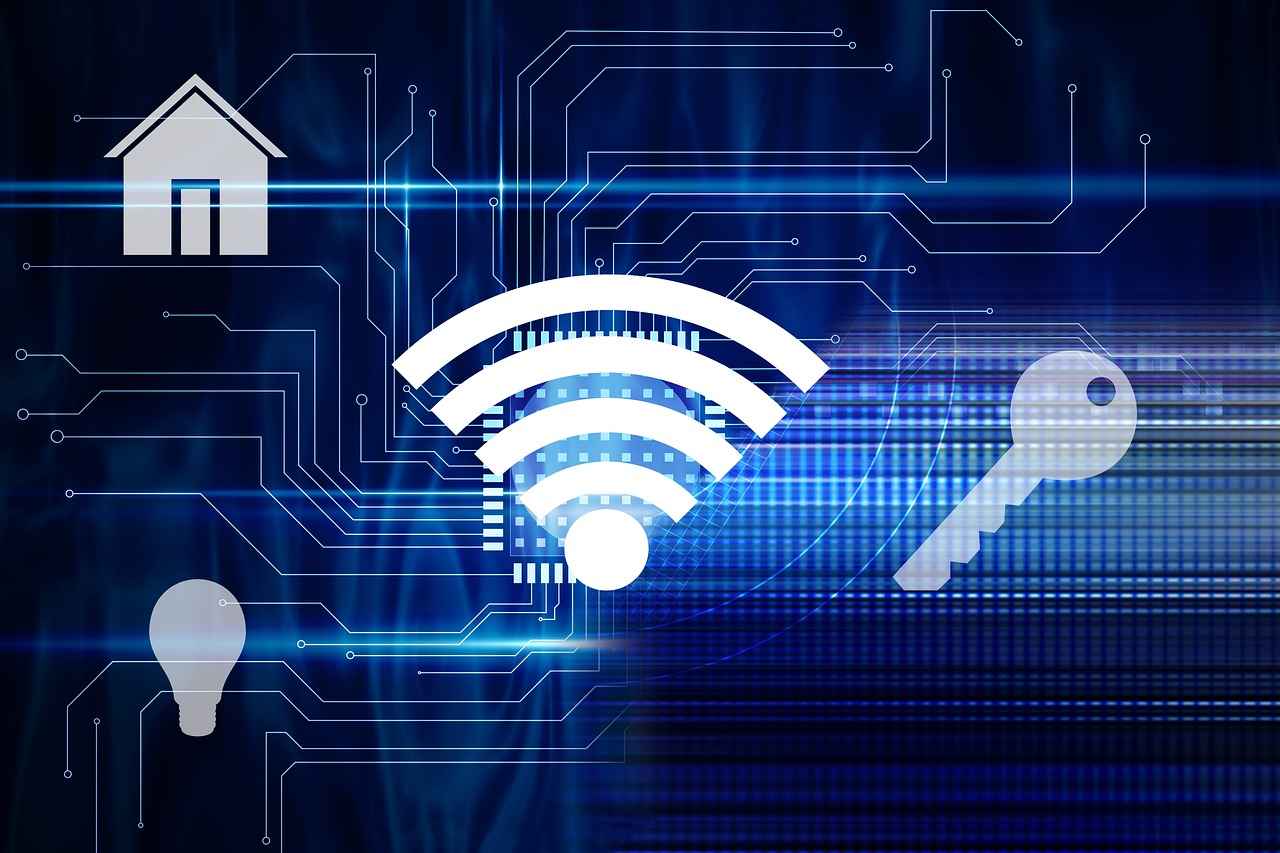
10. Smart Smoke and CO Detectors
In today’s world, ensuring the safety of your home is paramount. Smart smoke and carbon monoxide detectors have emerged as essential devices for homeowners looking to enhance their safety measures. These advanced detectors not only alert you to potential dangers but also provide critical information through smartphone notifications, enabling swift action during emergencies.
10.1. Why Choose Smart Detectors?
Traditional smoke and CO detectors are effective but often lack the advanced features that smart detectors offer. Smart detectors are designed with technology that includes:
- Real-time Alerts: Receive instant notifications on your smartphone, allowing you to respond quickly, even when you’re away from home.
- Voice Alerts: Many smart models provide voice notifications, specifying the type of danger and its location, which can be crucial during a crisis.
- Self-Testing: These devices can perform self-checks to ensure they are functioning correctly, providing peace of mind that your safety devices are operational.
10.2. Integration with Home Safety Systems
Smart smoke and CO detectors can seamlessly integrate with other smart home systems, creating a comprehensive safety network. For instance:
- They can communicate with smart security cameras to provide visual verification of alerts.
- Integration with smart home hubs allows for automated responses, such as unlocking doors or turning on lights when an alarm is triggered.
10.3. Choosing the Right Model
When selecting a smart smoke and CO detector, consider the following features:
- Battery Backup: Ensure the model has a reliable battery backup to function during power outages.
- Smartphone Compatibility: Look for models that are compatible with your smartphone’s operating system.
- Ease of Installation: Many smart detectors are designed for easy installation, allowing homeowners to set them up without professional assistance.
In conclusion, investing in smart smoke and carbon monoxide detectors is a proactive step toward safeguarding your home. With their advanced features and integration capabilities, they not only enhance safety but also provide homeowners with the tools needed to respond effectively in emergencies.
10.1. Importance of Smart Detectors
In today’s fast-paced world, ensuring the safety of our homes is more crucial than ever. Smart smoke and carbon monoxide (CO) detectors play a vital role in enhancing home safety by providing timely alerts and advanced features that traditional detectors lack. These devices are designed to protect families from the dangers of fire and toxic gas exposure, and their importance cannot be overstated.
- Real-Time Alerts: Smart detectors send instant notifications to your smartphone, allowing you to stay informed about potential dangers even when you’re away from home. This feature is especially critical for families with children or elderly members.
- Voice Alerts: Many smart detectors come equipped with voice alerts that specify the type of danger detected, whether it’s smoke or carbon monoxide. This clarity helps occupants respond appropriately and quickly in emergencies.
- Self-Testing Capabilities: Regular maintenance is essential for any safety device. Smart detectors often include self-testing features that automatically check their functionality, ensuring they are always in working order.
- Integration with Smart Home Systems: These detectors can be integrated with your existing smart home systems, allowing for coordinated responses. For instance, if smoke is detected, your smart home hub can trigger alarms, unlock doors, and turn on lights to facilitate a safe exit.
- Battery Status Notifications: Smart detectors can notify you when their batteries are low, preventing the risk of the device failing at a critical moment.
Investing in smart smoke and CO detectors is a proactive approach to home safety. By utilizing advanced technology, these devices ensure reliable performance and provide peace of mind for homeowners. With the ability to receive alerts and monitor safety from anywhere, families can feel secure knowing they are protected against unforeseen emergencies.
10.2. Integration with Other Safety Systems
Integration with Other Safety Systems
In today’s world, ensuring home safety is more crucial than ever. Smart smoke and carbon monoxide (CO) detectors play a pivotal role in enhancing home security by integrating seamlessly with other safety systems. This integration provides homeowners with a comprehensive solution to protect their families and properties.
When smart detectors are linked with home security systems, they can offer real-time alerts and notifications directly to a homeowner’s smartphone. This means that if a smoke alarm is triggered, the homeowner can receive an immediate alert, even when they are away from home. This feature allows for quicker responses to potential emergencies, reducing the risk of damage or harm.
| Integration Benefits | Description |
|---|---|
| Real-Time Alerts | Instant notifications to your mobile device in case of smoke or CO detection. |
| Automated Emergency Responses | Linking with security services can trigger automatic emergency responses, such as contacting local fire departments. |
| Enhanced Monitoring | Continuous monitoring of air quality and smoke levels, providing peace of mind. |
Moreover, integrating smart detectors with other smart home devices, such as smart lighting and smart speakers, can create a coordinated safety response. For instance, when smoke is detected, smart lights can flash to alert occupants, while smart speakers can announce warnings throughout the home. This multi-faceted approach ensures that everyone is aware of the danger, even in the event of a power outage.
In conclusion, the integration of smart smoke and CO detectors with other safety systems not only enhances home security but also ensures a more proactive approach to emergency management. Homeowners are encouraged to explore these integrations, as they provide a robust safety net that can significantly mitigate risks associated with fire and carbon monoxide exposure.

11. Smart Irrigation Systems
Smart Irrigation Systems are revolutionizing the way we approach gardening and landscaping by optimizing water usage. These advanced systems utilize technology to adjust watering schedules based on real-time weather conditions, ensuring that plants receive the right amount of water at the right time. This not only promotes healthy growth but also conserves precious water resources.
Smart irrigation systems are equipped with sensors and weather data integration. They collect information about soil moisture levels, rainfall forecasts, and temperature fluctuations. By analyzing this data, the system can automatically adjust watering times and durations, reducing the risk of overwatering or underwatering.
- Water Conservation: These systems significantly cut down on water waste, making them environmentally friendly.
- Cost Savings: By using water more efficiently, homeowners can see a reduction in their water bills.
- Healthier Plants: Consistent and appropriate watering leads to stronger, healthier plants and landscapes.
Many smart irrigation systems come with mobile apps that allow homeowners to monitor and control their irrigation systems remotely. This feature is particularly beneficial for those who travel frequently or have busy schedules, as it ensures gardens are cared for even in their absence.
In addition to conserving water, smart irrigation systems contribute to sustainable gardening practices. By optimizing water usage, they help maintain lush landscapes while reducing the overall environmental footprint.
Incorporating smart irrigation systems into your gardening routine not only enhances the efficiency of your landscape management but also aligns with environmentally responsible practices. As technology continues to evolve, these systems will play a crucial role in promoting sustainable gardening.
11.1. Environmental Benefits
Smart irrigation systems play a crucial role in promoting sustainable gardening practices and maintaining vibrant landscapes. One of the primary advantages of these systems is their ability to significantly reduce water waste. By utilizing advanced technology, they adjust watering schedules based on real-time weather data, soil moisture levels, and plant needs. This precision ensures that gardens receive the optimal amount of water, preventing over-irrigation and minimizing runoff.
Moreover, smart irrigation systems contribute to the overall health of the environment. By conserving water, they help preserve this vital resource, which is increasingly becoming scarce due to climate change and urbanization. Less water usage not only benefits individual gardens but also supports broader ecological health by reducing the strain on local water supplies and promoting biodiversity in landscaping.
In addition to water conservation, these systems can enhance soil health. By delivering water directly to the root zones of plants, smart irrigation minimizes erosion and runoff, allowing nutrients to remain in the soil where they are needed most. This targeted approach fosters stronger plant growth and reduces the need for chemical fertilizers, leading to healthier gardens that are more resilient to pests and diseases.
Furthermore, smart irrigation systems can be integrated with renewable energy sources, such as solar panels, making them even more eco-friendly. This integration not only reduces the carbon footprint associated with traditional irrigation methods but also encourages homeowners to adopt more sustainable practices throughout their gardens.
In conclusion, by reducing water waste and promoting sustainable gardening techniques, smart irrigation systems are essential tools for environmentally conscious homeowners. They not only maintain lush and healthy landscapes but also contribute to broader environmental goals, making them a wise investment for the future.
11.2. Remote Monitoring Features
In today’s fast-paced world, homeowners can greatly benefit from the capabilities of smart irrigation systems. One of the standout features of these systems is the ability to monitor and adjust irrigation settings remotely. This functionality not only ensures optimal care for gardens and landscapes but also provides peace of mind for those who travel frequently or have busy lifestyles.
With the integration of mobile applications, homeowners can access their irrigation systems from anywhere. Whether you are at work, on vacation, or simply away from home, these apps allow you to:
- Check Watering Schedules: Easily view and modify your watering schedules based on the current weather conditions.
- Adjust Watering Duration: Increase or decrease the duration of watering sessions to meet the specific needs of your garden.
- Receive Alerts: Get notifications about weather changes or system malfunctions, ensuring timely interventions.
Moreover, the ability to remotely monitor your irrigation system helps in conserving water and reducing utility bills. By adjusting schedules to avoid watering during rain or adjusting based on seasonal changes, homeowners can significantly minimize water waste.
Additionally, many smart irrigation systems are equipped with weather sensors that automatically adapt to local weather patterns. This means that homeowners do not need to worry about manually adjusting their systems as environmental conditions change, leading to more sustainable gardening practices.
In conclusion, the remote monitoring features of smart irrigation systems empower homeowners to maintain their gardens effortlessly. With the convenience of mobile technology, managing irrigation has never been easier, ensuring that plants receive the right amount of water while minimizing waste.

12. Conclusion: Building Your Smart Home
In summary, the integration of essential smart home devices can profoundly transform your living environment, enhancing convenience, security, and energy efficiency. For tech-savvy homeowners, the journey to a fully automated home begins with careful consideration of individual preferences and lifestyle needs.
Smart home technology is not just about luxury; it is about creating a personalized living experience. Each device plays a unique role in streamlining daily tasks and improving overall quality of life. For instance, smart speakers can act as the command center for your home, allowing you to control everything from lighting to temperature with simple voice commands.
Moreover, smart thermostats can learn your schedule and preferences, optimizing your home’s heating and cooling systems to both enhance comfort and reduce energy costs. This means homeowners can enjoy a cozy environment while also being mindful of their energy consumption.
Security is another critical aspect of a smart home. Devices like smart security cameras and doorbells provide real-time monitoring and alerts, ensuring that your home is safe even when you are away. With features like night vision and motion detection, these devices offer peace of mind and a layer of protection that traditional security systems cannot match.
Furthermore, smart lighting solutions allow for customization of ambiance, enabling homeowners to set the perfect mood for any occasion. The ability to control lighting remotely not only enhances convenience but also adds an extra layer of security by simulating occupancy when you are not home.
Ultimately, the path to building your smart home is about finding the right balance between technology and personal comfort. By thoughtfully selecting devices that align with your lifestyle, you can create a home that is not only efficient but also inviting and secure. Embrace the possibilities of smart home technology to elevate your living experience.
Frequently Asked Questions
- What are smart home devices?
Smart home devices are gadgets that connect to the internet and can be controlled remotely, enhancing convenience, security, and energy efficiency in your home.
- How do smart speakers work?
Smart speakers act as central hubs that respond to voice commands, allowing you to control other smart devices, play music, answer questions, and more.
- Are smart thermostats worth the investment?
Absolutely! Smart thermostats learn your habits and adjust temperatures accordingly, leading to significant energy savings and increased comfort.
- Can I monitor my home security cameras remotely?
Yes! Most smart security cameras allow you to view live feeds and receive alerts on your smartphone, giving you peace of mind wherever you are.
- What are the benefits of smart lighting?
Smart lighting offers flexibility in controlling brightness and color, energy savings, and the ability to set schedules for added security and convenience.
- Do I need a smart home hub?
A smart home hub can simplify managing multiple devices by connecting them all in one place, making automation and control much easier.
- How do smart appliances enhance daily life?
Smart appliances can be controlled remotely, provide alerts for maintenance, and even suggest recipes, making your daily routines smoother and more efficient.
- What features should I look for in a smart doorbell?
When choosing a smart doorbell, consider features like HD video, night vision, and motion detection to ensure comprehensive monitoring of your entryway.
